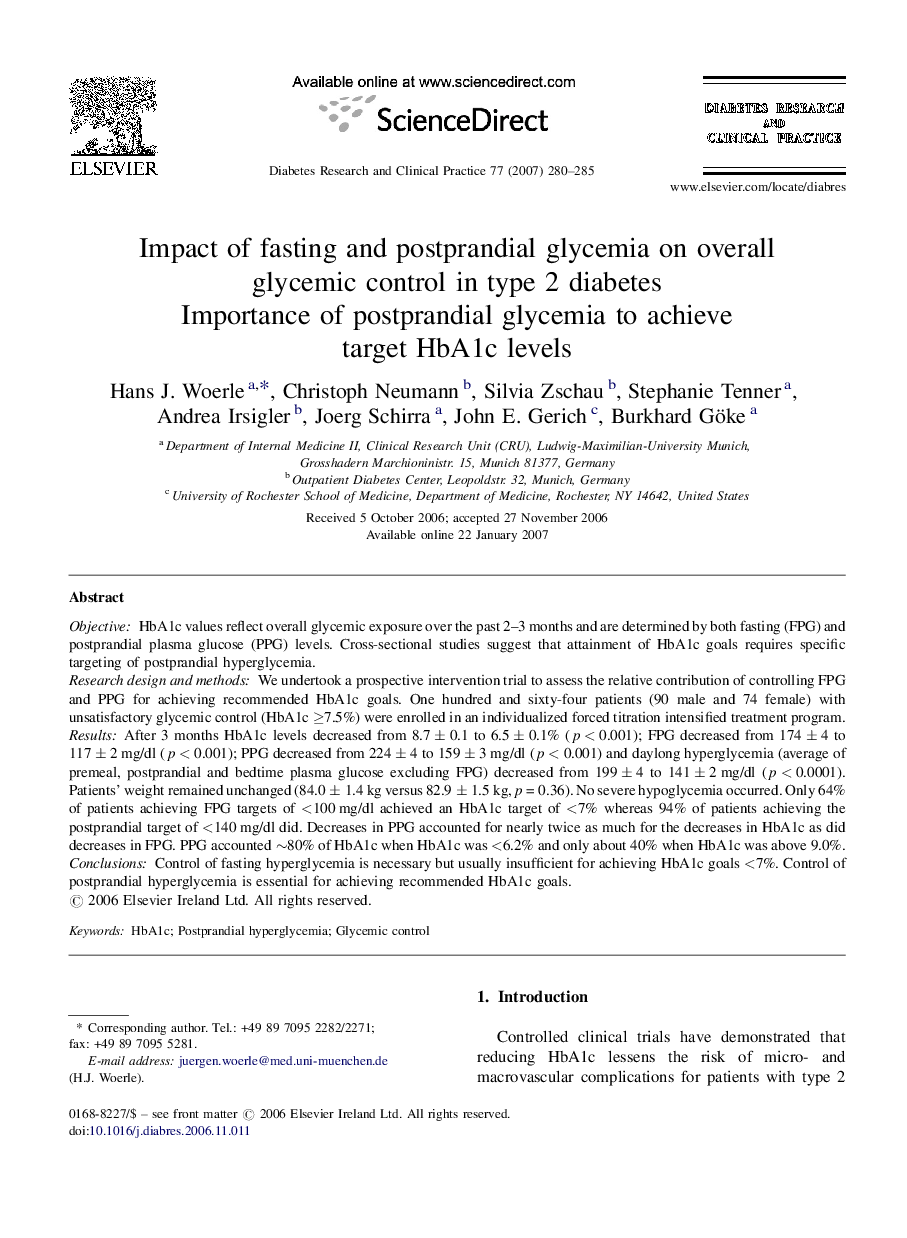| Article ID | Journal | Published Year | Pages | File Type |
|---|---|---|---|---|
| 2798691 | Diabetes Research and Clinical Practice | 2007 | 6 Pages |
ObjectiveHbA1c values reflect overall glycemic exposure over the past 2–3 months and are determined by both fasting (FPG) and postprandial plasma glucose (PPG) levels. Cross-sectional studies suggest that attainment of HbA1c goals requires specific targeting of postprandial hyperglycemia.Research design and methodsWe undertook a prospective intervention trial to assess the relative contribution of controlling FPG and PPG for achieving recommended HbA1c goals. One hundred and sixty-four patients (90 male and 74 female) with unsatisfactory glycemic control (HbA1c ≥7.5%) were enrolled in an individualized forced titration intensified treatment program.ResultsAfter 3 months HbA1c levels decreased from 8.7 ± 0.1 to 6.5 ± 0.1% (p < 0.001); FPG decreased from 174 ± 4 to 117 ± 2 mg/dl (p < 0.001); PPG decreased from 224 ± 4 to 159 ± 3 mg/dl (p < 0.001) and daylong hyperglycemia (average of premeal, postprandial and bedtime plasma glucose excluding FPG) decreased from 199 ± 4 to 141 ± 2 mg/dl (p < 0.0001). Patients’ weight remained unchanged (84.0 ± 1.4 kg versus 82.9 ± 1.5 kg, p = 0.36). No severe hypoglycemia occurred. Only 64% of patients achieving FPG targets of <100 mg/dl achieved an HbA1c target of <7% whereas 94% of patients achieving the postprandial target of <140 mg/dl did. Decreases in PPG accounted for nearly twice as much for the decreases in HbA1c as did decreases in FPG. PPG accounted ∼80% of HbA1c when HbA1c was <6.2% and only about 40% when HbA1c was above 9.0%.ConclusionsControl of fasting hyperglycemia is necessary but usually insufficient for achieving HbA1c goals <7%. Control of postprandial hyperglycemia is essential for achieving recommended HbA1c goals.
